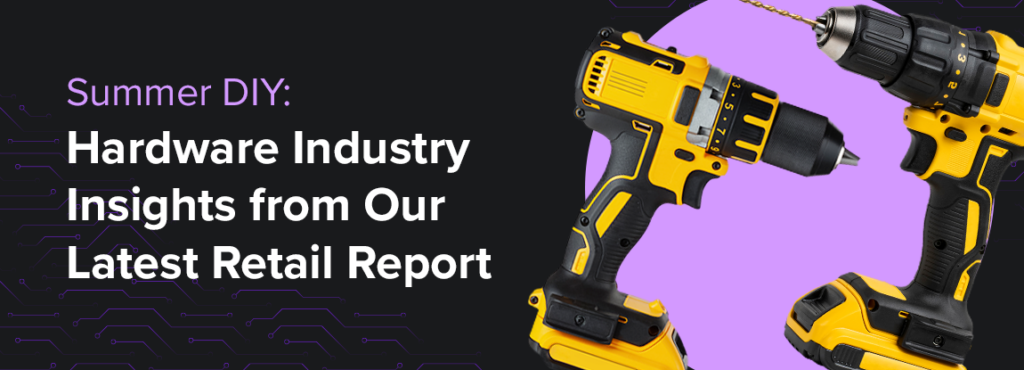As summer hots up, many homeowners are diving into DIY projects, from sprucing up their gardens and outdoor recreation areas to revamping their kitchens and living spaces. This surge in home improvement shopping is reflected in our latest retail report, highlighting trends in consumer behavior and purchasing patterns.
Author: PriceSpider
Summer DIY: Hardware Industry Insights from Our Latest Retail Report
As summer hots up, many homeowners are diving into DIY projects, from sprucing up their gardens and outdoor recreation areas to revamping their kitchens and living spaces. This surge in home improvement shopping is reflected in our latest retail report, highlighting trends in consumer behavior and purchasing patterns.
Prime Day 2024: Did It Deliver?
Since its inception in 2015, Prime Day has been positioned as one of the biggest shopping days of the year, coming in after the likes of Black Friday and Cyber Monday. As the world continues to shift towards the convenience of online shopping, Prime Day has enabled Amazon to encourage higher rates of purchase as well as increase memberships to its Prime loyalty program.
Spider Spotlight: Jesse Johnson, Engineering Director, Global Data Acquisition
This month’s Spider Spotlight is centered on our Engineering Director, Global Data Acquisition, Jesse Johnson. Jesse shared his experiences at PriceSpider and advice for brands looking to conquer the digital shelf.
Spider Spotlight: Ark Zaydman, Strategic Partnerships Manager
For our latest Spider Spotlight, we asked our Strategic Partnerships Manager, Ark Zaydman, to tell us more about his time at PriceSpider and his vision for the future of ecommerce. We asked, and Ark answered.
PriceSpider Opens New London Office Amid Strong Momentum Across EMEA
PriceSpider announced new London Office amid momentum across EMEA. New strategic location headed by ecommerce veteran underscores the company’s mission to support brands around the globe.
PriceSpider Earns Top Industry Honors for its Innovative Shoppable Solutions
PriceSpider announced a new partnership with It’sRapid, a pioneer in AI-driven creative automation for ecommerce content and retail media, for seamless and rapid content creation for shoppable campaigns.
PriceSpider Partners with It’sRapid to Make it Easier for Ecommerce Brands to Generate Images, Videos and Product Descriptions at Scale
PriceSpider announced a new partnership with It’sRapid, a pioneer in AI-driven creative automation for ecommerce content and retail media, for seamless and rapid content creation for shoppable campaigns.
Make the latest innovations work for you: PriceSpider’s Spring 2024 Product Updates
Get the scoop on PriceSpider’s latest product innovations, including new features and optimizations for Where to Buy, Brand Monitor and shoppable solutions.
Designing for every shopper: how to build inclusive, sensory-friendly ecommerce experiences
Learn how accessibility in ecommerce creates a better shopping experience for everyone, not just those using assistive technologies.







